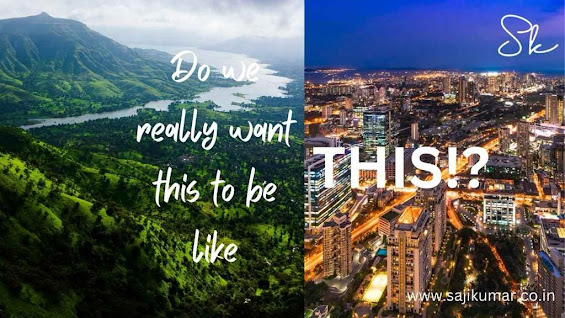Third Mumbai :Who requires Third Mumbai?
Third Mumbai :Who requires Third Mumbai?
Millions are still locked in choky and dingy holes of slums and ever-sprouting illegal structures. People who live in luxurious sky villas also do not feel free from the water-tight urban ambience. On the grimy surface, local lords illicitly rent the space to fill their pockets.
Now, a new method has come up. The numbered expansion of Mumbai by building what is known as hubs after agglomerating lands at throwaway prices reflects this. The local governing authority plans to build business-cum-residential “hubs”, and tries to create demand for lands at inflated prices. A person does not need deep research and extraordinary intelligence to understand that some big hands might have already bought massive parcels of land in the locations identified for the ‘Third Mumbai’, before announcing the plan.
The Maharashtra government has given the go-ahead for “Third Mumbai” in December 2023 before fully meeting the scope of development in the already-existing places within the metropolitan regions. Though the plan of ‘Third Mumbai’ is also identified within the metropolitan regions, which constitute nine municipal corporations, re-designating the sparsely populated faraway serene places as ‘Third Mumbai’ may disturb the entire belt, most parts are tranquil and undisturbed by the urban chaos. A business town with people trapped in exceptionally unhealthy living ambience needs a serene neighborhood where they can relax at the weekend.
A resort within the city is an unworkable idea. Then, where can an ideal weekend resort be set up? A resort cannot be built too far from a town for the reason of accessibility and longer traveling time. It cannot be located too close to uptowns for environmental and economic reasons. It can come up only in sparsely populated peaceful neighbourhoods. When our planners drag these places also to join the humming towns in the name of building ‘Third Mumbai’ one cannot call it a brilliant idea. It will not decongest the congested urban enclaves. It can be an idea only for the new landlords to become staggeringly richer. No one knows the enormity of the land deal that preceded the plans. ‘Third Mumbai’ is not the idea desired by the public at all. Nor is it for serving the people who cannot afford a home in any part of the metropolitan region. At the same time, let us not forget what is in store for the ‘First Mumbai’ that covers the elite south Mumbai and its suburbs. The state of the heavily polluted ‘Second Mumbai,’ that is Navi Mumbai, is also not different.
The legendary Mumbai is sinking at the rate of two millimeters a year. A year ago, Mumbaites read shocking news of rising sea levels, enough to swallow all the structures built on the massive reclamation. Greater Mumbai Municipal Corporation warned that 80 percent of elite south Mumbai’s A, B, C D wards would be submerged by 2050. The up-market residential and commercial districts like Nariman Point, Cuffe Parade, Churchgate, Colaba, Fort, Marine Drive, Girgaum, Breach Candy, Mohammed Ali Road etc. would first face the brunt of sinking Mumbai. The rising sea level can swallow all the landmarks of south Mumbai, which include Mantralaya, Five-star hotels, heritage structures, premier commercial structures like BSE, University of Mumbai, Bombay High Court, etc. If experts’ predictions prove right the heart of Mumbai will be the first victim of climate change.
Third Mumbai’ under a new entity called New Town Development Authority (NDTA) is not a solution for the ensuing crisis. Perhaps, the plan, encompassing the development of 323 sq. km. may contribute more to the already deteriorating climate crisis because the development of hitherto non-premium locations like Ulwe, Pen, Panvel, Uran, and Karjat will destroy massive amounts of greenery, mangroves and farms. Two hundred villages will join ‘Third Mumbai,’ which may cheer some people, but not the villagers who may lose their livelihood activities against one-time high land prices offered by shrewd real estate developers. No one would be able to estimate the size of the environmental destruction in the course of building ‘Third Mumbai’.

Comments
Post a Comment